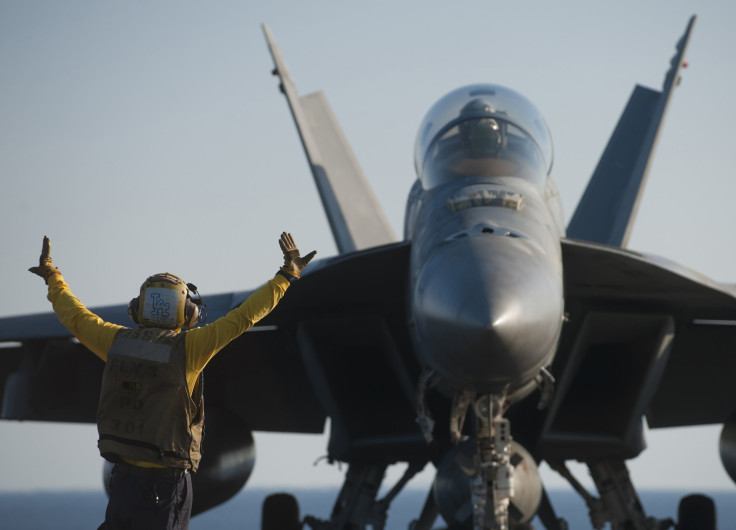US Deploys The Navy's Boeing F/A-18 To Hit ISIS Targets In Kurdistan

U.S. aircraft have begun bombing artillery targets in areas held by the Islamic State in northern Iraq, a Pentagon spokesman, Rear Adm. John Kirby, announced Friday. To carry out the strikes, the U.S. is using the main fighter-bomber of the Navy, the carrier-based Boeing F/A-18 Hornet, more commonly known as the F-18.
“At approximately 6:45 a.m. EDT, the U.S. military conducted a targeted airstrike against Islamic State of Iraq and the Levant terrorists,” Kirby said in a statement.
“Two F/A-18 aircraft dropped 500-pound laser-guided bombs on a mobile artillery piece near Erbil,” the Iraqi Kurdish capital, he said. “ISIL was using this artillery to shell Kurdish forces defending Erbil where U.S. personnel are located.”
ISIL is also known as ISIS, the Islamic State of Iraq and Syria.
The plane, which costs up to $57 million and can fly at almost twice the speed of sound, has a long history in Iraq, first conducting sorties in the country during the Persian Gulf War in 1991 and the eight-year-long Iraq War beginning in 2003.
The F-18s came from the USS George H.W. Bush, the Navy said, the only American aircraft carrier currently positioned within striking range of Iraqi Kurdistan. According to the Globalsecurity.org website and other sites that monitor the location of major U.S. warships, the nuclear-powered carrier is in the Persian Gulf.

Now, the aircraft has been called in to assist Kurdish forces as they face intense pressure from Islamist terrorists. Humanitarian supplies and food drops have also been conducted by the U.S. to the tens of thousands of Iraqis that have been forced deep into the Kurdish mountains.
The F/A-18 undertook its first flight in November 1978 before being introduced to the fleet in January 1983, and saw its first action in the 1986 bombing of Libya ordered by President Ronald Reagan after a terrorist attack in Berlin. It was produced by McDonnell Douglas, which was later bought by the Boeing Co (NYSE:BA).
The current models being fielded by the U.S. Navy are the E and F, which are a vast improvement over the previous generations and are known as "Super Hornet." With a maximum takeoff weight of 66,000 lbs. (30 metric tons), they have the ability to carry a large load of bombs and missiles, both in the air-to-air and air-to-ground attack roles. As well as a cannon, the M61 Vulcan, that can shoot 6,000 rounds per minute, the Super Hornet can carry six air-to-air missiles and a vast array of bombs, both guided and unguided, and missiles for both the anti-ship and ground-attack roles.
The 500-pound (225 kg) bomb employed against ISIS is the GBU-12, which uses a laser beam to guide it precisely onto a target. The beam can be provided by either the attacking aircraft or troops on the ground.
The Pentagon gave no indication of how long the attacks on ISIS would last.
© Copyright IBTimes 2024. All rights reserved.






















